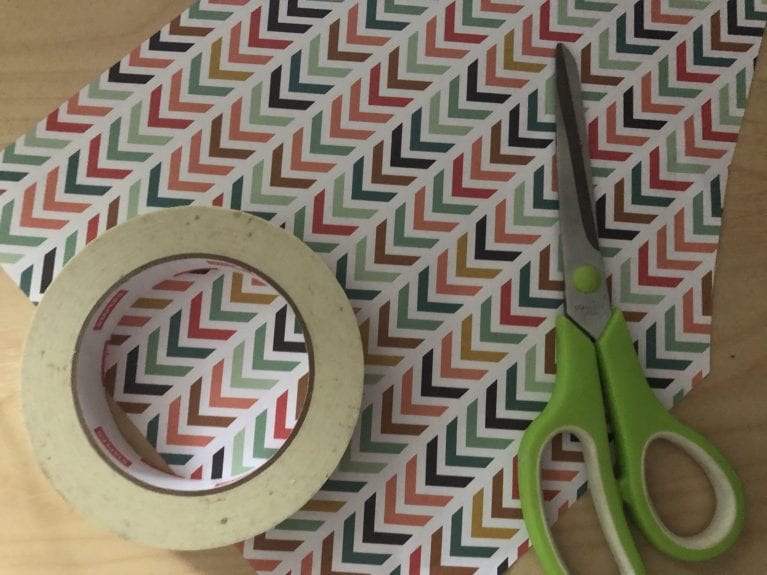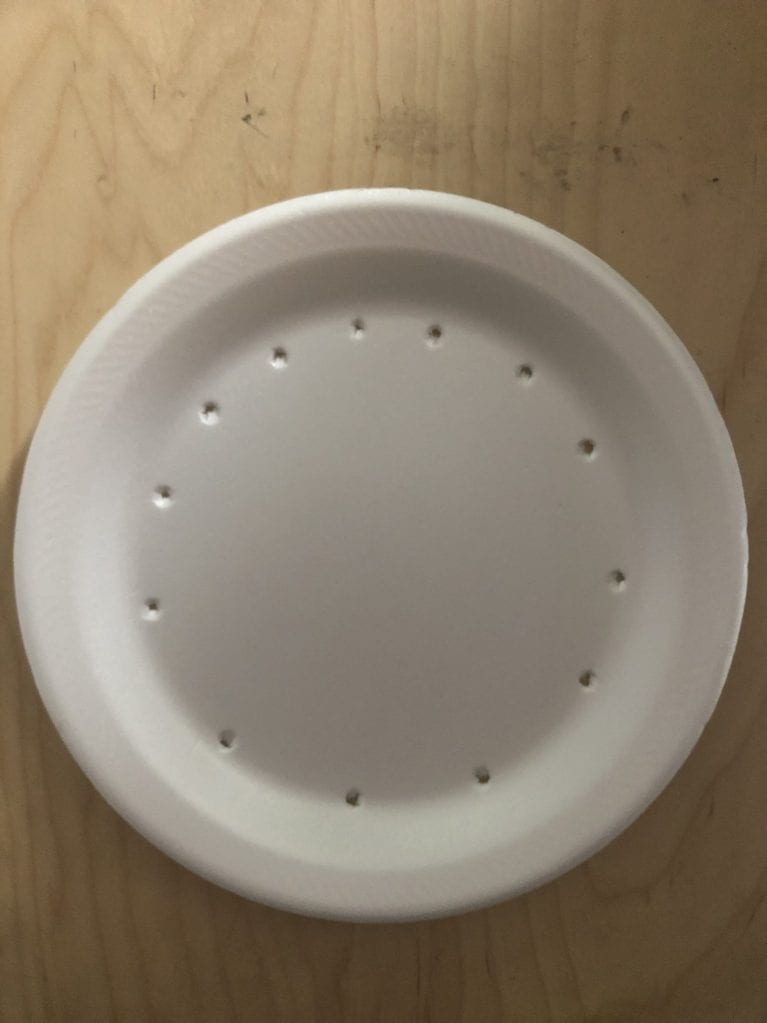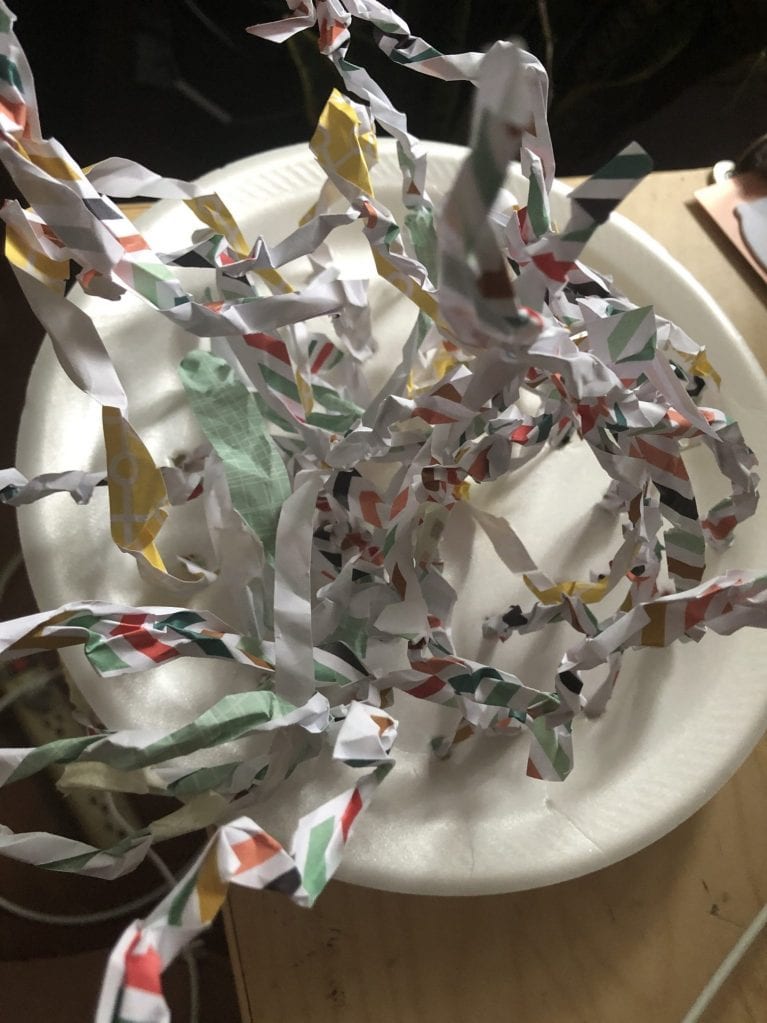Español abajo
Create fiber art inspired by Sarah Zapata.
Download Activity
Sarah Zapata, A little domestic waste IV, 2017, Natural and synthetic fiber, hand-woven fabric, steel, cement, coiled rope, Collection of the artist, Courtesy of Deli Gallery
Sarah Zapata is a Peruvian-American fabric artist who lives and works in the Red Hook neighborhood of Brooklyn, New York. Born in Corpus Christi, Texas in 1988, Zapata was raised in the Dallas area. She received a BFA in Studio Art – Fibers from the University of North Texas in 2011. Her work has been shown throughout the United States, as well as Mexico and Peru.
Zapata’s studio practice is firmly based in Fiber Arts, utilizing traditional weaving, coiling and latch-hook techniques to achieve very contemporary abstracted objects. Inspired by her Peruvian heritage and feminist theory, Zapata’s body of work addresses issues of labor, systems of power and control, Queerness, cultural relativism and the intersectionality of identity.
Supplies
Scissors, Paper, Yarn or Cloth, Paper Plate, Tape, Pencil
Instructions
Step 1: Use scissors or a pencil to make holes in the plate.
Step 2: Think about what colors or textures you want in your artwork. Select the colors and type of material you want to use.
Step 3: Use scissors to cut pieces of yarn, strips of cloth or paper. Cut the material into different lengths to add volume to your artwork.
Step 4: String the material through the holes. Tie a knot or tape the material to other side of the plate.
Step 5 (Optional): Add a variety of materials and lengths to create texture in your artwork.
Vocabulary
Installation art – genre of art that are site-specific and transform the chosen space
Fiber art – refers to fine art whose material consists of natural or synthetic fiber and other components, such as fabric or yarn
SEE SARAH ZAPATA’S A LITTLE DOMESTIC WASTE IV IN ENTWINED: RITUAL WRAPPING AND BINDING IN CONTEMPORARY SOUTHERN ART AT THE OGDEN MUSEUM.
CHECK OUT THE OGDEN MUSEUM ONLINE FOR MORE RESOURCES !
QUESTIONS? EMAIL EDUCATION@OGDENMUSEUM.ORG.




_______________________________________________________________________
Actividad artística O-riginal: Arte de fibra
Inspirado por Sarah Zapata
Crea arte de fibra inspirándote en Sarah Zapata.
Descargar Actividad
Sarah Zapata, A little domestic waste IV, 2017, Natural and synthetic fiber, hand-woven fabric, steel, cement, coiled rope, Collection of the artist, Courtesy of Deli Gallery | Sarah Zapata, Un poco de desecho doméstico IV, 2017, fibra natural y sintética, tela tejida a mano, acero, cemento, cuerda enrollada, colección de la artista, cortesía de la Galería Deli
Sarah Zapata es una artista de fibra peruana-americana que vive y trabaja en el barrio de Red Hook, en Brooklyn, Nueva York. Zapata nació en Corpus Christi, Texas, en 1988 y se crió en el área de Dallas. En 2011, recibió su licenciatura en Artes Plásticas y Fibras por la Universidad del Norte de Texas.
Su obra ha sido exhibida en todo Estados Unidos, en México y en Perú El estudio de Zapata está enfocado principalmente en el arte de la fibra: utiliza técnicas de tejido tradicional, de enrollado y de tejido con aguja de lengüeta para lograr objetos abstractos contemporáneos.
Influida por su herencia peruana y la teoría feminista, la obra de Zapata se enfoca en cuestiones laborales, de sistemas de poder y control, cuestiones queer, de relativismo cultural y referidas la interseccionalidad de la identidad.
Materiales
Tijeras, papel, hilo o tela, plato descartable, cinta adhesiva y lápiz.
Instrucciones
Paso 1: Utiliza las tijeras o un lápiz para hacer agujeros en el plato.
Paso 2: Piensa en qué colores o texturas quieres que tenga tu obra de arte. Elige los colores y el tipo de material que quieras usar.
Paso 3: Utiliza las tijeras para cortar pedazos de hilo, tiras de tela o papel. Corta el material en diferentes largos para agregar volumen a tu obra de arte.
Paso 4: Enhebra el hilo por los agujeros. Haz un nudo o pega el material al otro lado del plato con cinta adhesiva.
Paso 5 (Opcional): Agrega una mayor variedad de materiales y largos para darle textura a tu obra de arte.
Vocabulario
Instalación artística: un género de arte que se desenvuelve en un sitio específico y transforma el espacio en el que está.
Arte de fibra: se refiere a las bellas artes cuyo material consiste en fibra natural o sintética y otros componentes, como tela o hilo.
VÉ MÁS DE UN POCO DE DESECHO DOMESTICO IV DE SARAH ZAPATA EN ENTRELAZADO: ENVOLTURA Y ATADURA RITUAL EN EL ARTE SUREÑO CONTEMPORÁNEO E N EL MUSEO OGDEN DE ARTE SUREÑO.
¿PREGUNTAS? ENVÍA UN EMAIL A EDUCATION@OGDENMUSEUM.ORG.
Translation by Agostina Coll




